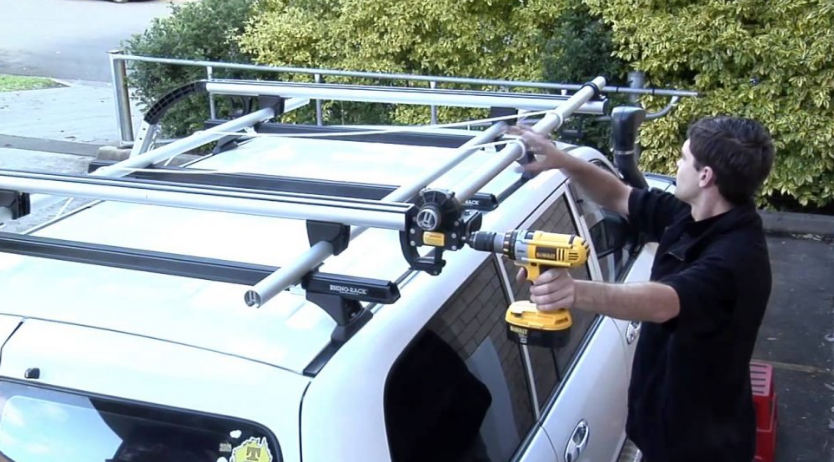If you’ve ever packed up for a weekend road trip, camping adventure, or family vacation, you’ve probably used—or at least thought about using—a roof rack. Whether it’s hauling bikes, kayaks, luggage, or even furniture, a roof rack can be a lifesaver when it comes to freeing up space inside your vehicle. But there’s one critical thing you need to know: how to secure your load safely.
Improperly secured items on your roof rack aren’t just annoying—they’re dangerous. A loose gear can damage your car, cause accidents, or fly off on the highway. In this complete guide, we’ll walk you through everything you need to know to safely secure loads on your roof rack, keep your belongings intact, and get to your destination stress-free.
Why Proper Load Securing Matters
Before we dive into the how-to, let’s talk about the why.
When you attach items to your roof rack, you’re increasing the height, weight, and wind resistance of your vehicle. These changes affect your car’s handling and stability. If the load isn’t evenly distributed or securely fastened, it can shift while driving—or worse, come loose entirely. This can lead to:
- Road hazards for other drivers
- Damage to your cargo
- Scratched paint, dented roofs, or broken windows
- Reduced fuel efficiency
- Legal issues and traffic fines
The good news? With the right tools and techniques, securing loads on your roof rack is easy and safe.
Step-by-Step Guide to Securing Loads on Your Roof Rack
1. Choose the Right Roof Rack for Your Vehicle
Not all roof racks are the same. Some are factory-installed; others are aftermarket. What matters is choosing one that suits your needs. There are racks made specifically for bikes, cargo boxes, surfboards, or general utility.
Make sure your roof rack:
- Matches your vehicle’s make and model
- Can support the weight of your intended cargo
- Has crossbars that are properly spaced
- Is professionally installed or securely mounted
Pro tip: Check your vehicle’s owner manual for weight limits on your roof and rack system.
2. Know the Weight Limits
There are two weight limits you need to understand:
- Dynamic Load Limit: The maximum weight your roof rack can hold while the vehicle is in motion.
- Static Load Limit: The maximum weight it can hold when the vehicle is stationary (like when using a rooftop tent).
Never exceed these limits—it could damage your roof or affect your vehicle’s balance. Keep in mind that these limits include the weight of the rack itself, not just your cargo.
3. Use the Right Tie-Down Equipment
Secure gear isn’t about using just any old rope. Invest in quality tie-down equipment like:
- Ratchet straps: Great for heavier items; they lock into place and stay tight.
- Cam buckle straps: Easier to use and ideal for lightweight gear.
- Bungee cords: Can help with stabilization but should not be the primary method.
- Roof rack nets or covers: For irregular-shaped loads like firewood or camping gear.
Avoid using frayed ropes or cheap straps—they’re not worth the risk.
4. Distribute the Load Evenly
Try to center the load on the roof rack and distribute the weight evenly from left to right. This will keep your vehicle balanced and easier to control.
- Place the heaviest items at the bottom.
- Keep lighter and flexible items on top.
- Avoid stacking things too high—it increases wind drag and instability.
An unbalanced load isn’t just unsafe; it can also affect fuel economy and make your drive noisy or bumpy.
5. Secure the Load Tight—But Not Too Tight
Once your gear is in place:
- Tighten the straps securely so nothing moves or shifts.
- Test the tension by giving the items a firm shake—if anything moves, tighten again.
- Don’t overtighten to the point of damaging the cargo or roof rack.
Double-check that straps are not pressing on sharp corners or edges. If they are, use padding to prevent tears or damage.
6. Check for Loose Ends and Flapping Straps
Loose strap ends can flap in the wind and create a ton of noise—or worse, unravel. Secure them with:
- Strap keepers
- Velcro ties
- Duct tape (as a last resort)
You’d be surprised how much peace of mind this simple step can bring during your trip.
7. Test Before You Drive
Before hitting the road:
- Give everything a final inspection.
- Shake and push your load from different angles.
- Take a short test drive around your neighborhood.
After 10-15 minutes of driving, pull over and check everything again. Straps often loosen a bit once the car gets moving.
8. Drive Differently With a Roof Load
Once you’re on the road with gear on your roof rack, remember:
- Take turns more slowly
- Leave more distance for braking
- Avoid high speeds and sudden lane changes
- Watch out for low-clearance areas (like garages or drive-thrus)
A loaded roof changes your car’s center of gravity and can affect handling. Drive like you’re hauling something precious—because you are!
What Can You Carry on a Roof Rack?
With the right setup, a roof rack can carry just about anything, including:
- Luggage or cargo boxes
- Bicycles
- Surfboards and paddleboards
- Skis and snowboards
- Kayaks and canoes
- Camping gear
- Building materials (lumber, pipes, etc.)
If you’re carrying something long, like a kayak or ladder, use front and rear tie-downs that attach to your bumper or tow hooks for added security.
Common Mistakes to Avoid
- Overloading the roof rack – Stick to weight limits at all times.
- Using worn or weak straps – Invest in strong, reliable tie-downs.
- Not re-checking straps – Always double-check after the first 15 minutes.
- Ignoring wind resistance – Large items can create lift or sway; secure them tightly.
- Driving too fast – Speed increases wind drag and instability.
Avoiding these mistakes is the best way to ensure a safe and stress-free ride.
Maintenance Tips for Your Roof Rack
To keep your roof rack in top condition:
- Clean it regularly to remove dirt, salt, and debris.
- Inspect for rust or wear—especially after winter.
- Tighten bolts and mounts periodically.
- Store removable racks indoors when not in use for long periods.
A little upkeep goes a long way in extending the life of your roof rack and ensuring every trip is as safe as the last.
Final Thoughts
A roof rack is one of the most useful accessories for any vehicle owner—whether you’re a weekend camper, an outdoor sports lover, or just heading on vacation with the family. But the benefits only come with proper load securing.
Taking the time to safely load, tie, and test your cargo can make the difference between a smooth journey and a highway disaster. With the right tools, techniques, and mindset, you’ll travel confidently and safely—every time.
FAQs
1. How fast can I drive with a load on my roof rack?
It’s best to keep your speed under 65 mph when carrying loads on a roof rack. Higher speeds increase wind resistance, reduce handling, and can loosen even tightly secured items.
2. Do I need a roof rack to carry items on top of my car?
Yes, using a roof rack is the safest and most secure way to carry loads on your car’s roof. Never place items directly on your vehicle’s roof without a rack—you risk damaging the paint, the roof, and other drivers.
3. Can I use a roof rack in the rain or snow?
Absolutely! Most roof racks are built to handle weather conditions. However, be sure your cargo is waterproof or well-covered, and check that your tie-downs are weather-resistant. Also, keep an eye on road safety and drive slower in slippery conditions.












Leave a Reply